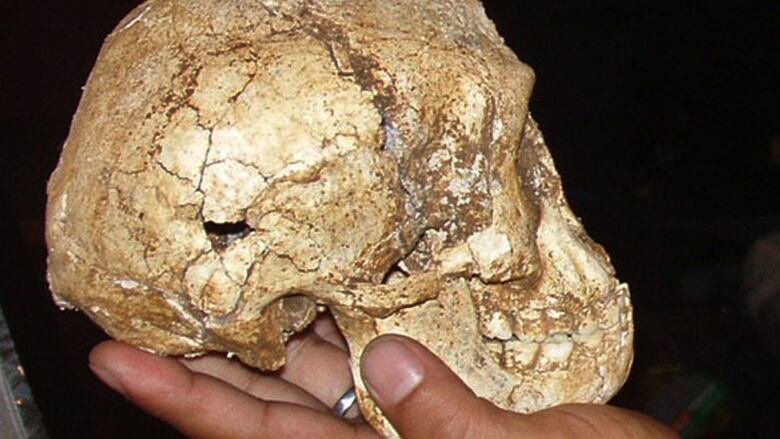'Hobbit' fossils older than thought
Homo floresiensis died out 50,000 years ago, not 12,000

It was a spectacular discovery: Fossil remains in an Indonesian cave revealed a recent relative of modern humans that stood about 3 feet tall. The creatures were quickly nicknamed "hobbits."
With evidence that they had survived to just 12,000 years ago, the hobbits appeared to have been the last of our companions on the human branch of the evolutionary tree to go extinct.

Now, a decade after they made headlines, they've lost that distinction. New investigations indicate they evidently disappeared much earlier about 50,000 years ago, before Neanderthals did, for example.
The new date raises speculation about whether hobbits were doomed by the arrival of modern humans on their island. But it doesn't change much about their scientific significance, said Matt Tocheri of Lakehead University in Thunder Bay, Ontario.
He and others wrote the new paper with three of the researchers who'd first reported the discovery in 2004. The new paper was released Wednesday by the journal Nature.
The hobbits are formally known as Homo floresiensis, reflecting their home on the Indonesian island of Flores. With small, chimp-sized brains, the hobbits had skulls that resembled Homo erectus, which lived in Africa and Asia. But they also had long arms and short legs that harkened back to the much older evolutionary forerunners best known for the skeleton dubbed Lucy.
It's not clear where they fit in the human family tree. They may have descended from taller ancestors who shrank because of their isolation on the island. Some scientists have argued they were diseased modern humans rather than a separate species, but experts called that a minority view and several said the new dates make it less likely.

Hobbits evidently made the stone tools that were found along with skeletal remains in the Liang Bua cave. The new analysis says the remains are 100,000 to 60,000 years old, while the artifacts range in age from about 190,000 to 50,000 years.
Researchers revised the original age estimates after new excavations revealed more about the geology of the cave. Sediments were sampled to date the artifacts and bones.
"I think it's a terrific paper," said Bernard Wood of George Washington University, who had no role in the research. "They have done everything you can possibly ask."
Human doom?
So did the arrival of modern humans spell the end for the hobbits, as is proposed for the demise of the Neanderthals in Europe and Asia about 40,000 years ago?

There's no evidence that modern humans occupied Flores until long after the hobbits were gone. But they are known to have lived not far away, in Australia, some 50,000 years ago right about the time the hobbits evidently disappeared.
"It is certainly suggestive," said anthropologist Karen Baab of Midwestern University in Glendale, Arizona, who studies the hobbits but didn't participate in the new work.
Richard Roberts of the University of Wollongong in Australia, a study author, said in an email it is "certainly a possibility to be considered, but solid evidence is needed in order to demonstrate it. One thing we can be certain of, it will definitely be a major focus of further research."












_(720p).jpg)


 OFFICIAL HD MUSIC VIDEO.jpg)
.jpg)



























































































